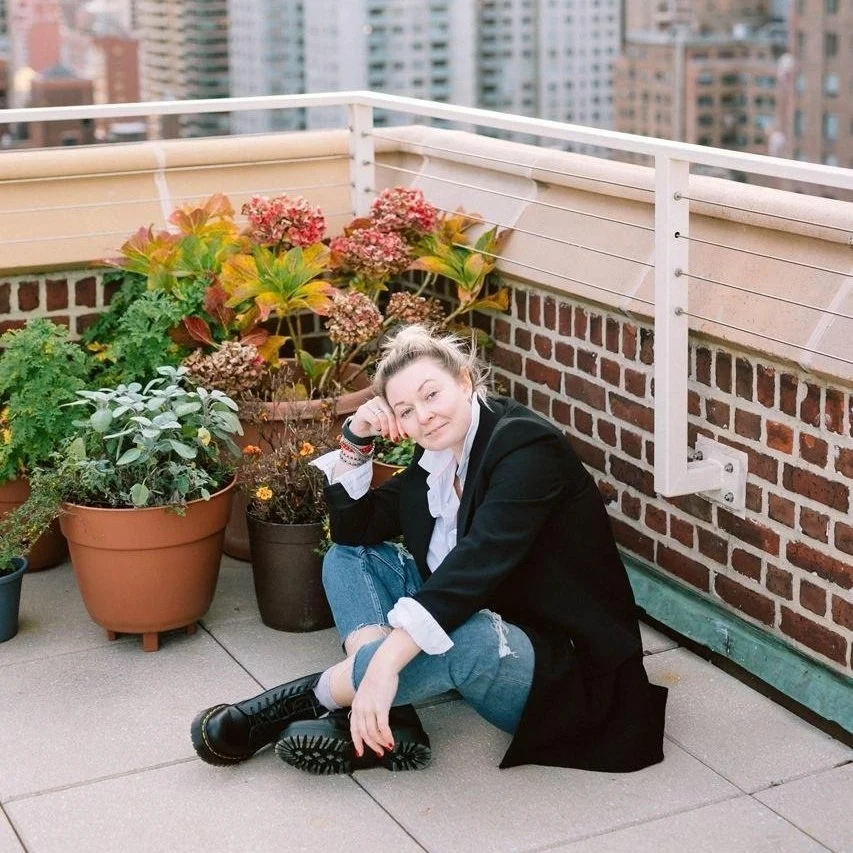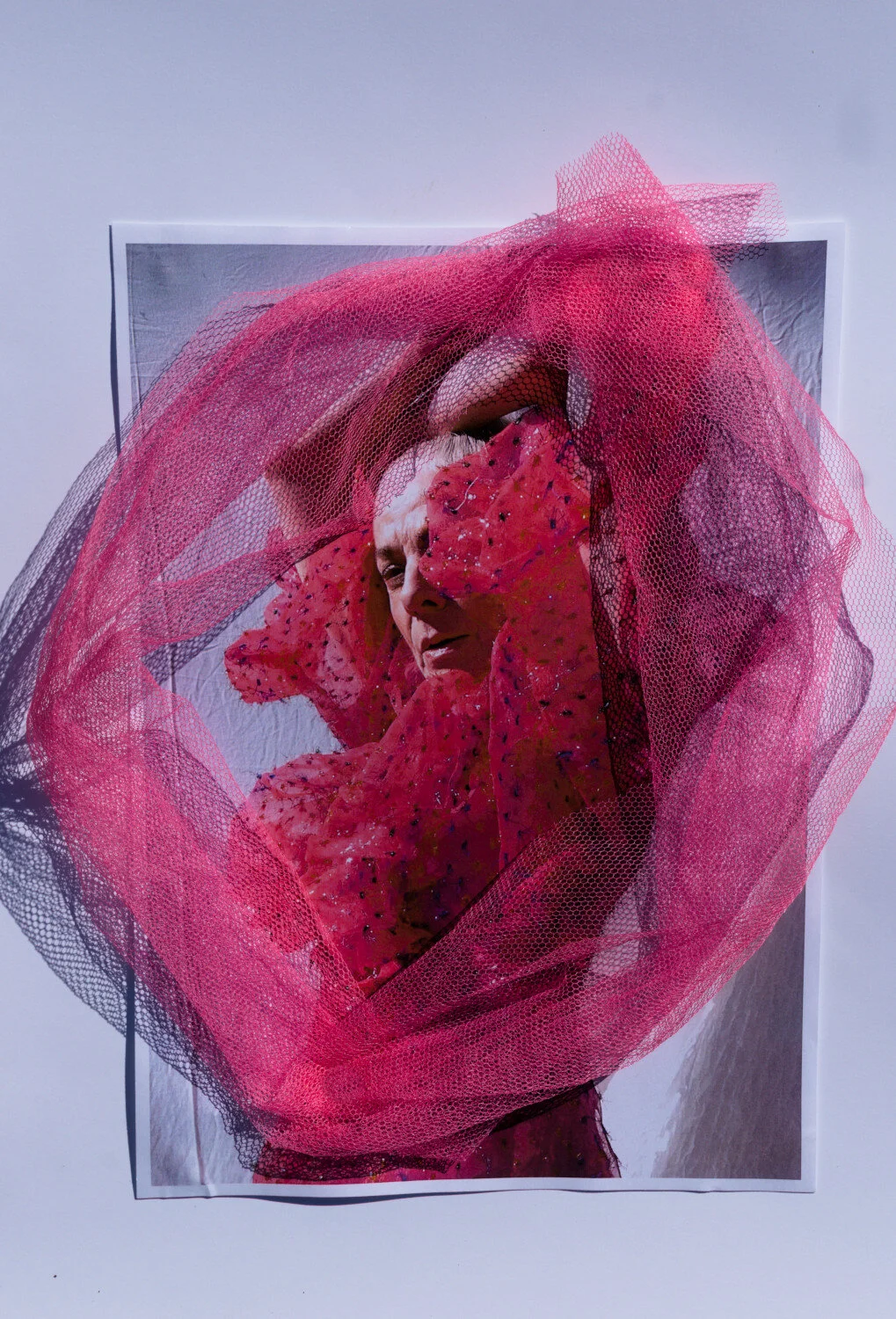10 Questions with Xuemeng Zhang
Al-Tiba9 Art Magazine ISSUE12 | Featured Artist
Xuemeng Zhang is a visual artist whose practice is driven by exploring connections between the mind and the eye. Her work navigates between identity and culture, belonging and alienation, and apprehension and mindfulness. Zhang was born in Beijing, and currently lives and works in New York City. She holds a BA in Psychology and Studio Art from Clark University and an MFA in Photography, Video, and Related Media from the School of Visual Arts.
Zhang was listed as a finalist in the 17th Arte Laguna Prize, and received honorable mentions in Chromatic Photography Awards and New York Photography Awards. Her work has been exhibited internationally, including at Untitled Art (Miami Beach, United States), Kühlhaus Berlin (Berlin, Germany), Blank Wall Gallery (Athens, Greece), Floor_ Gallery (Seoul, South Korea), ZAZ 10TS (New York, United States), Pennsylvania Academy of the Fine Arts (Philadelphia, United States), and featured in F-Stop Magazine and Al-Tiba9 Contemporary Art Magazine.
Xuemeng Zhang - Portrait
ARTIST STATEMENT
The tension between the unpredictability of imagined spaces and the certainty of photographic images challenges one's perception. Using photographs as raw material, Xuemeng Zhang reconstructs and visualizes the architectures of the mind. The artist builds spaces that do not yet exist physically, which acknowledge feelings of uneasiness and envisage how one lives in this built world. Is an imagined space a mirage or a sugar-coated thorny land? The artist invites viewers to find the answers together.
O27, UV print on Dibond, 20x25 in, 2022 © Xuemeng Zhang
Other Rooms | Project Statement
Other Rooms is a photographic project on the reconstruction of imaginary spaces. I imagine such spaces as a reflective place in one's mind, where distressing emotional experiences can coexist with a present awareness of one's state of mind. I build and digitally rearrange images in geometrical and irregular shapes to visualize the structuring of imagined spaces. In this construction, a bird in the wild is trapped in an architectural form, and an acupuncture model finds itself lost in an amusement park.
The displacement of images reflects how visual information is stored and merges over time. I use shapes as entrances and borders in imagined landscapes where opposites coexist, and ambiguity is the norm. This project lies at the intersection of perceived reality and built spaces. Each shaped image is a container of emotions, perceptions, and fantasies. Each container is an individual space that complements other spaces, resembling sections of a musical piece. The work questions how imaginary spaces form and function, and how idiosyncratic perception influences and shapes the way we make sense of the world.
OB25, Archival inkjet print, 19x27 in, 2021 © Xuemeng Zhang
Get your limited edition copy now
INTERVIEW
First of all, introduce yourself to our readers. Who is Xuemeng Zhang, and how did you develop into the artist you are today?
I am an artist inspired by the connections between the mind and the eye. I use photography as a medium to explore the world around me and use photographs as raw material to visualize and reconstruct landscapes of the mind.
Do you remember when you first realized you wanted to be an artist? What inspired you to pursue this career?
When I was growing up, my parents often took me to art exhibitions. I was always amazed at the ability of artists to create connections with viewers through their work and how a piece of art could bring strangers together. I am lucky that several teachers and mentors I encountered during adolescence and early adulthood told me that making art could be more than a hobby.
BO12, Archival inkjet print, 20x28 in, 2022 © Xuemeng Zhang
G14, Archival inkjet print, 20x28 in, 2022 © Xuemeng Zhang
You were born and raised in China but currently live in New York. What inspired you to make such a move? And why did you choose New York specifically?
I decided to come to New York while studying psychology and art in Worcester, Massachusetts. I wanted to immerse myself in museums and galleries and be around talented people from around the world, so New York seemed to be the natural next step for me.
You have already worked and exhibited extensively between East Asia, North America, and Europe. What is your aim as an artist today?
I have always wanted to share how I view the world through art. I started out taking traditional still-life and landscape photographs. Then I gradually adopted a more multi-media approach when making work. I want to experiment with mediums and materials I have not worked with and expand my practice to incorporate other techniques I have not used before. I hope there will be an audience who feels that my work speaks to them, evokes some kind of emotions from them, or inspires them to explore their own imagined landscapes.
P39: Oasis, Archival inkjet print, 21x15 in, 2021 © Xuemeng Zhang
As you mention in your biography, your practice "is driven by exploring connections between the mind and the eye," and your work "navigates between identity and culture, belonging and alienation, and apprehension and mindfulness." How do you combine these different themes? And how much of your personal experience is reflected in this choice?
One of my creative motivations is to explore the connections between art and psychology. For instance, if we were able to ask Dutch painter Hieronymus Bosch "What does temptation look like?" He would invite us into a world where winged people fly along with fish. If we posed the same question to social psychologist Walter Mischel, he would have led us into a laboratory where a child sits alone in a room with a bowl of marshmallows. I find it interesting that, to some extent, both art and psychology transform intangibles into something palpable. This connection between the mind and the eye always inspires me to explore contrasting ideas or topics, which create a third space where opposites coexist, and ambiguity is the norm. I aim to find the balance between visual harmony and conceptual collision.
Your series Other Rooms is a reconstruction of imaginary spaces that you build digitally. How did you develop this concept? And what messages do you want to convey to the public?
Other Rooms is an ongoing series that developed when I noticed the shift from the physical world to virtual space as our digital presence became equally important to our physical one. It made me wonder how living in such a space affects us mentally. I wanted to explore how we perceive, process, and transform pleasant and stressful information and emotions.
I also wanted to share with the audience imagined landscapes in the form of photographs, but without the familiar, rectangular boundaries. Through visualizing reconstructed imagined spaces, I invite viewers to consider how they would restructure or visualize their own spaces.
GP34, Archival inkjet print, 23x11 in, 2022 © Xuemeng Zhang
How do you choose which photos and geometrical elements to pair in each image? Do you follow any specific rules, or do you have any set procedure to follow?
Rather than pairing shapes and photos, I usually develop a different shape outline for each piece based on characteristics of lines and shapes that already exist in the photographs. The formation of imaginary spaces conforms to no rules, so the creation of these geometrical shapes also follows no rules.
Is there any other medium or theme you would like to incorporate into your practice?
I also make videos, sculptures, and installations. Photography is the main "ingredient" of my practice, but similar to how a chef uses multiple ingredients to make a dish, I am always open to incorporating new mediums, techniques, and elements in my work if they help convey my ideas better.
G25, Archival inkjet print, 23x17.5 in, 2022 © Xuemeng Zhang
P18, Archival inkjet print, 20x10 in, 2022 © Xuemeng Zhang
Let's talk about your future projects; what are you working on now? Do you have any upcoming shows or publications?
First of all, I am honored that this magazine will feature my work in the upcoming issue. My works are currently on view at Untitled Art 2022 in Miami Beach Art Week, and at Kühlhaus Berlin as part of the BBA Photography Prize Exhibition. In March 2023, my work will be shown in the Arte Laguna Prize Finalists' Exhibition at Arsenale Nord in Venice, Italy. While continuing to work on the ongoing series, Other Rooms, I am starting a new project exploring group identity.
And lastly, where do you see yourself and your art five years from now?
Putting life's unpredictability aside, I see myself staying curious and productive over the next five years to reach a broader audience worldwide and build more influence. I want to dive deeper into themes I have been exploring and publish my own photo books. I am curious to see where my work, attempts, and experiments will lead me five years from now.


























